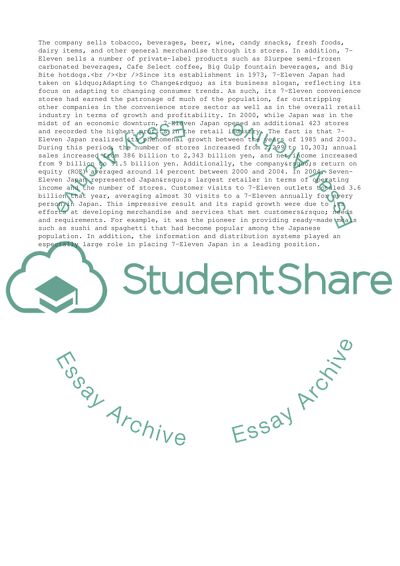Cite this document
(Exploring 7-Eleven Japans Strategic Supply Chain Case Study, n.d.)
Exploring 7-Eleven Japans Strategic Supply Chain Case Study. https://studentshare.org/business/1706502-7-11-japan
Exploring 7-Eleven Japans Strategic Supply Chain Case Study. https://studentshare.org/business/1706502-7-11-japan
(Exploring 7-Eleven Japans Strategic Supply Chain Case Study)
Exploring 7-Eleven Japans Strategic Supply Chain Case Study. https://studentshare.org/business/1706502-7-11-japan.
Exploring 7-Eleven Japans Strategic Supply Chain Case Study. https://studentshare.org/business/1706502-7-11-japan.
“Exploring 7-Eleven Japans Strategic Supply Chain Case Study”. https://studentshare.org/business/1706502-7-11-japan.


